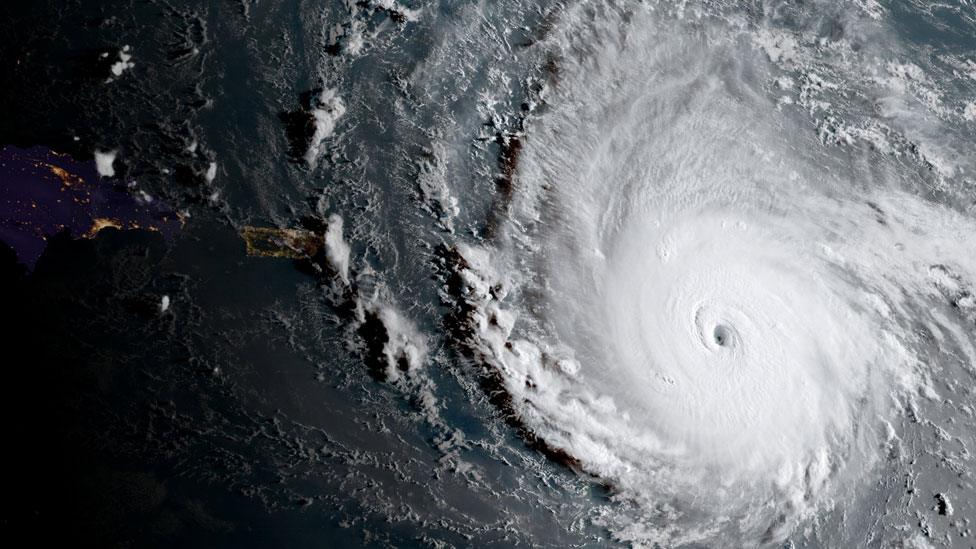Hurricane Laura ‘will cause unsurvivable storm surge’
- Published

More than half a million people have been told to get out of the path of Hurricane Laura
Hurricane Laura is expected to cause an "unsurvivable" storm surge, extreme winds and floods as it hits the US, the National Hurricane Center (NHC) says.
The category four storm is approaching Texas and Louisiana with maximum sustained wind speeds of 150 miles per hour (240km/h).
If it maintains those speeds it would be one of the strongest storms to ever hit the US south coast.
Half a million residents have been told to leave the area.
As of 23:00 local time (04:00 GMT) the centre of the hurricane was 65 miles (105km) south east of Port Arthur, external in Texas.
Laura and another storm, Marco, earlier hit the Caribbean, killing 24. Marco has already struck Louisiana, bringing strong winds and heavy rain on Monday.
Initially it was feared that both storms would hit Louisiana as hurricanes within 48 hours of each other - an unprecedented event - but Marco was downgraded to a tropical storm.
Hurricane Laura approaches Texas
Laura, on the other hand, has strengthened rapidly from a category three, gaining 70% in power in just 24 hours, to a category four, maximum sustained winds of 140mph (220km/h).
It is now close to becoming a category five storm, which would mean maximum sustained winds of 158mph (254km/h).
Hurricane Katrina - which devastated New Orleans in 2005, killing more than 1,800 people - was a category five storm before weakening to a category three when made landfall in the US.
US President Donald Trump told those potentially affected by the storm to "listen to local officials", external as the storm was "very dangerous and rapidly intensifying".
Evacuations are complicated by the Covid-19 pandemic. Texas Governor Greg Abbott urged families who could afford it to take refuge in hotels and motels to be distanced from others.
What can we expect from Hurricane Laura?
Early on Wednesday the NHC said satellite images had shown that Laura had undergone a remarkable intensification to become a "formidable hurricane".
In a series of tweets, it said Laura was expected to bring "life-threatening hazards" and an "unsurvivable storm surge" to parts of the coast of the Gulf of Mexico.


Well-built homes could incur major damage, trees could be snapped or uprooted and electricity and water would be unavailable for days or even weeks, it said.
"Hurricane force winds and widespread damaging wind gusts will also spread well inland into portions of eastern Texas and western Louisiana early Thursday," the NHC added.
Allow X content?
This article contains content provided by X. We ask for your permission before anything is loaded, as they may be using cookies and other technologies. You may want to read X’s cookie policy, external and privacy policy, external before accepting. To view this content choose ‘accept and continue’.

Storm surges of more than 20ft (6m) are possible. In an update at 14:00 local time, the NHC reported 3.2ft of inundation already on parts of the Louisiana coast.
"To think that there would be a wall of water over two storeys high coming on shore is very difficult for most to conceive, but that is what is going to happen," said National Weather Service meteorologist Benjamin Schott.
"The word 'unsurvivable' is not one that we like to use, and it's one that I've never used before," he added.
Governor Abbott urged people in the path of the storm to "take advantage of these final few hours to evacuate".
"The power of Hurricane Laura is unprecedented, and Texans must take action now to get out of harm's way and protect themselves," he said.
Laura is expected to reach landfall near the Texas-Louisiana border between midnight and 02:00 local time on Thursday (07:00 GMT).
The National Weather Service has also issued a tornado watch for parts of Louisiana, Texas and Mississippi, external.
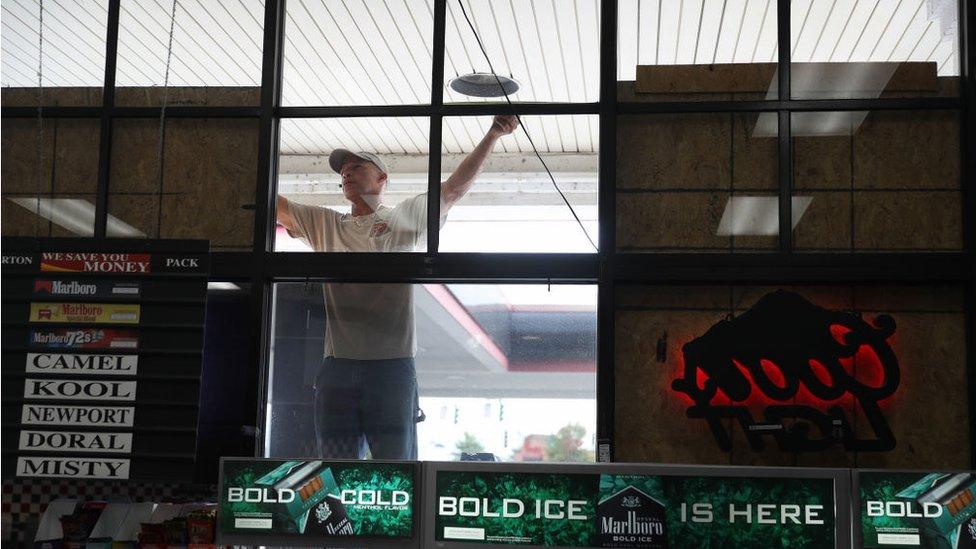
A man boards up a Louisiana store as the state braces itself for Hurricane Laura
More than 420,000 Texas residents have been ordered to leave, while an additional 200,000 were told to evacuate Calcasieu Parish in south-western Louisiana.
Port Arthur, Texas, is home to the nation's largest oil refinery, and workers have been taken off at least 310 offshore facilities in the Gulf of Mexico, reducing oil production by 84% for a second day in a row, officials said.
What happened in the Caribbean?
Marco and Laura brought high winds and rough seas to the Caribbean, leaving at least 24 people dead, including a baby and an eight-year-old child in Haiti.
Heavy rains have also battered parts of Cuba, the Dominican Republic, and the US territory of Puerto Rico. President Trump declared a state of disaster in the territory on Saturday.
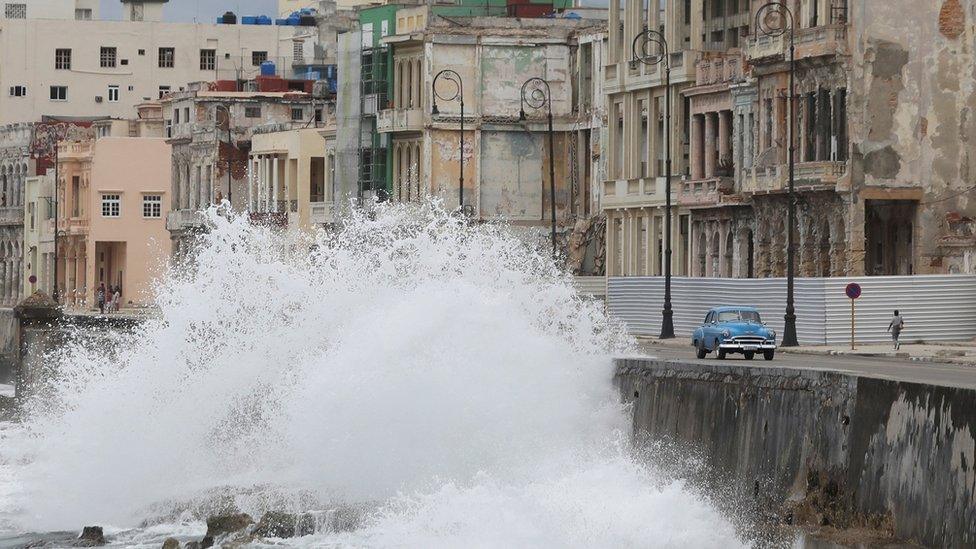
Laura has brought rough seas and high winds to the Caribbean, including here in Havana, Cuba
In Cuba, authorities have evacuated at least 160,000 people from several coastal regions, while thousands have been evacuated in the Dominican Republic.
In Jamaica, there were reports of landslides and flooded roads.

Have you left the area? What is the situation like where you are? Share your experiences by emailing haveyoursay@bbc.co.uk, external.
Please include a contact number if you are willing to speak to a BBC journalist. You can also get in touch in the following ways:
WhatsApp: +44 7756 165803
Tweet: @BBC_HaveYourSay, external
Please read our terms & conditions and privacy policy
If you are reading this page and can't see the form you will need to visit the mobile version of the BBC website to submit your question or comment or you can email us at HaveYourSay@bbc.co.uk, external. Please include your name, age and location with any submission.
- Published25 August 2020
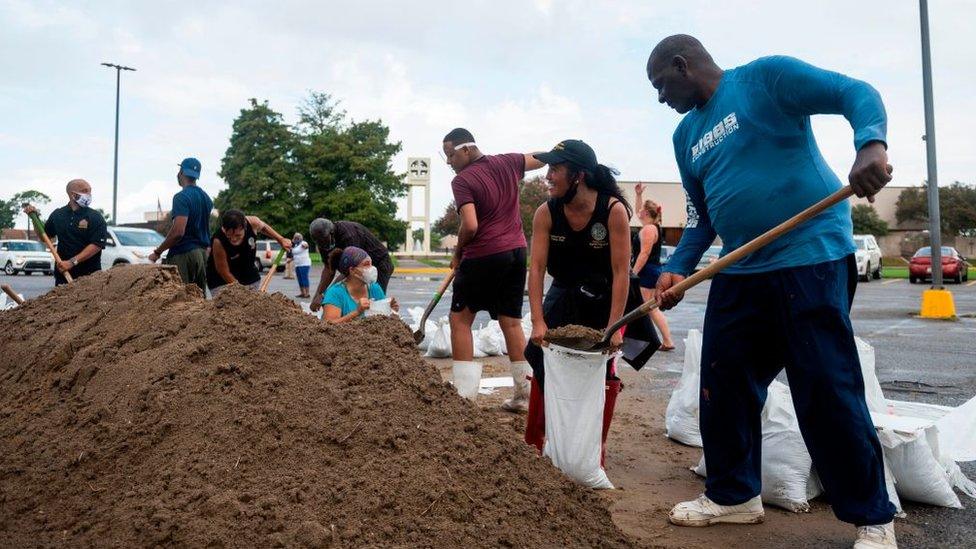
- Attribution
- Published24 August 2020
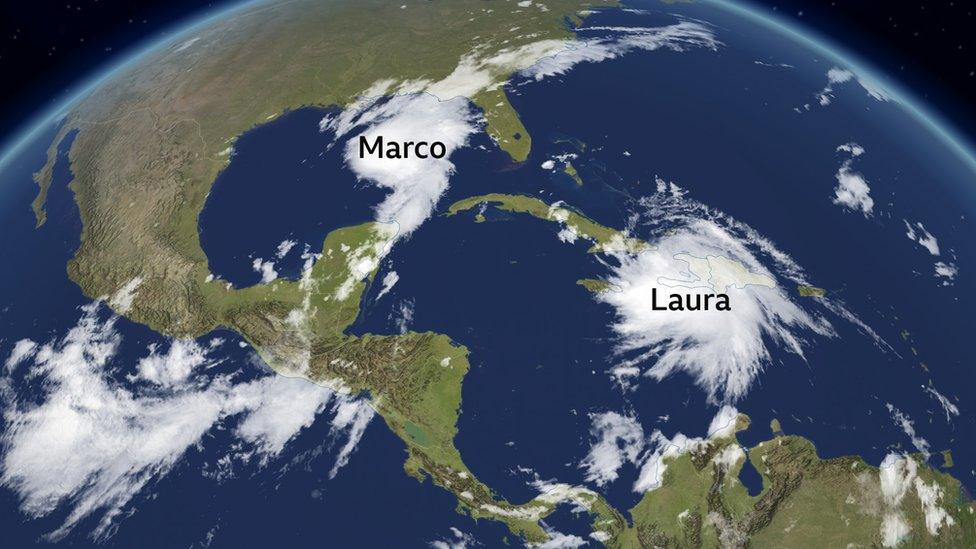
- Published24 August 2020

- Published16 September 2020
